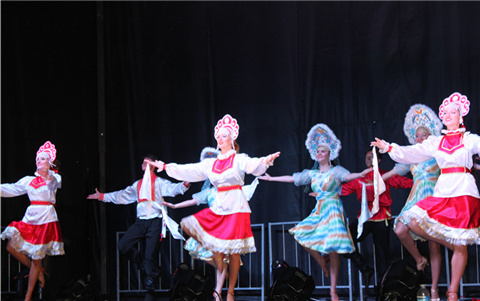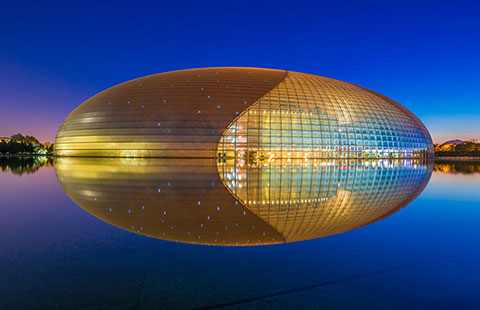Sublime beauty in the shadows of war
Updated: 2015-10-03 08:10
By Wang Shanshan(China Daily)
|
||||||||
After three days in this seaside paradise we boarded a bus, then a ferry for Korcula Island, one of the largest and greenest islands in the Adriatic, renowned for its white wines and according to some the birthplace of Marco Polo.
From there we returned to Split before taking an overnight ferry to Ancona on the western coast of Italy. That trip was made in pitch-black darkness, with barely a star, nor any other ship, to be seen. However, as soon as the sun rose, the gleaming waters of the Adriatic spread before us, and from the recesses of my mind Porco Rosso began to resurface.
In the movie, a friend of our porcine hero says: "The Adriatic is the most beautiful place, but people living beside it often have a hard life."
The movie, set in the 1930s, has as its backdrop Italy and impending war. It was released in 1992, 15 months into the Yugoslav wars that would last another nine years and result in the deaths of more than 140,000 people.
Throughout our five-day trip, for all the beauty we encountered, somber reminders of war never seemed far away. Dubrovnik was bombed over two months in late 1991, and in the same year Croats and Serbs clashed over control of the Plitvice Lakes National Park.
Once we were back in China, because of the Adriatic's appearance in news reports of ships carrying refugees from war-torn Syria, I could not shake it from my mind.
A "hard life" indeed, in a place where, when humanity is at its shining best, it bequeaths to the world such wonders as the cities of Split, Trogir and Dubrovnik.
If you go
Getting to Croatia from China: Getting around Croatia directly from China can be tricky and definitely requires careful planning, largely because of Croatia's unusual geography. There are no direct flights from Beijing/Shanghai to Zagreb the capital or Dubrovnik, and travelers are advised to take connecting flights via Milan, Vienna or Istanbul. This could help cut down a lot of the ticket cost.
After you arrive: From Zagreb, there are multiple bus lines operating every two hours to Split and Dubrovnik, but with a duration of almost 8 hours. If you happen to also visit the Plitvice Lakes area that is situated in between the two cities, buses are a good option, and if you want to further cut down two hours en route, you can take the private shuttle buses run by local cab drivers in the Plitvice areas (200 kuna per person). If you are traveling from Italy, night cruises from Italy's port city Ancona to Split might be a good choice. There is also a small airport in Split used by many low budget airlines. As the economic and cultural center of the Dalmatian coast, Split is bustling with islanders who flock into the city to work even as ferries whisk tourists out to many beautiful islands, the Bol, Hvar, Korcula islands to name a few. Not far from the airport, is the Unesco town Trogir, It is a smaller, cleaner, less touristy version of Split.
wangshanshan@chinadaily.com.cn
- Senior US envoy to visit Japan, S Korea, China
- Russia, US agree to cooperate in solving Syria crisis: Russian FM
- Iranian President calls Iran deal victory over war
- LatAm experts praise Xi on yuan, globalization
- Evidence found of summertime water flows on Mars: study
- Dogs surf in contest in California

 Across Canada
Across Canada
 Ten highlights from Xi's trip to US and UN
Ten highlights from Xi's trip to US and UN
 Top 10 life-changing benefits from Xi's US visit
Top 10 life-changing benefits from Xi's US visit-
 Highlights of President Xi's speeches at UN
Highlights of President Xi's speeches at UN -
 The president's historic journey to the west
The president's historic journey to the west -
 China's first lady visits Juilliard School
China's first lady visits Juilliard School 
 Polish couple brings six daughters to China to study Chinese
Polish couple brings six daughters to China to study Chinese
 Top 10 nominated designs at Beijing Design Week
Top 10 nominated designs at Beijing Design Week
Most Viewed
Editor's Picks

|

|

|

|

|

|
Today's Top News
Xi pledges $2 billion to help developing countries
Young people from US look forward to Xi's state visit: Survey
US to accept more refugees than planned
Li calls on State-owned firms to tap more global markets
Apple's iOS App Store suffers first major attack
Japan enacts new security laws to overturn postwar pacifism
Court catalogs schools' violent crimes
'Beauty of Beijing's alleys akin to a wise, old person'
US Weekly

|

|







